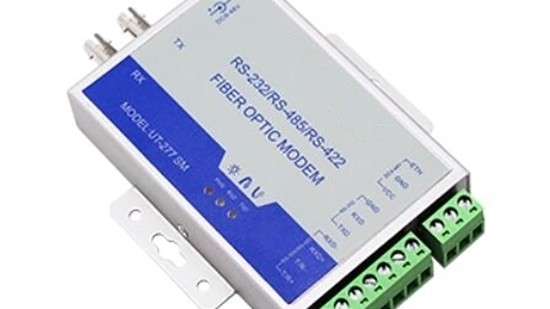
In modern network infrastructure, the strategic integration of copper and fiber optic cabling is essential for optimizing performance, reach, and reliability. Fiber Media Converters are critical Layer 1 devices that facilitate this integration by transparently converting electrical signals from copper Ethernet (e.g., 10/100/1000BASE-T) into optical signals for fiber optic cabling (e.g., 100BASE-FX, 1000BASE-SX/LX) and vice versa. This article delineates the operational principles, key characteristics, and architectural applications of these fundamental networking components.
1. The Fundamental Need for Signal Conversion
While twisted-pair copper cabling is cost-effective for short-distance device connectivity, it suffers from inherent limitations: susceptibility to Electromagnetic Interference (EMI), a limited maximum range (100 meters for Gigabit Ethernet), and security vulnerabilities to eavesdropping. Fiber optic cabling addresses these shortcomings by offering:
Extended Reach:Links can span from kilometers to tens of kilometers.
EMI Immunity: Light signals are immune to electrical noise.
Enhanced Security: Tapping fiber optic cables is notoriously difficult and easily detectable.
High Bandwidth Potential: Fiber provides a path for future network speed upgrades.
Fiber Converter act as the indispensable bridge, allowing network planners to leverage the cost-efficiency of copper for edge connections while harnessing the performance and robustness of fiber for backbone links.
2. Operational Principle and Architecture
A Media Converter is a simple, transparent device operating at the Physical Layer (Layer 1) of the OSI model. It does not interpret or manage data packets; it solely converts the physical signal encoding from one medium to another.
A typical converter has two primary interfaces:
1. Copper (RJ45) Port: Connects to standard Ethernet devices like switches, routers, or PCs using Category 5e/6/6a cable. This port handles electrical signals.
2. Fiber Optic (SC/LC) Port:Connects to the fiber optic network. This port contains a laser or LED transmitter and a photodiode receiver to handle optical signals.
Internal Process:
Copper-to-Fiber:The converter receives an electrical Ethernet signal from the RJ45 port. Its circuitry recovers the clock and data, which then drives a laser or LED to modulate the data onto a light beam, which is transmitted through the fiber.
Fiber-to-Copper: The converter receives pulses of light from the fiber. A photodiode receiver converts these light pulses back into electrical signals, which are then reshaped and transmitted out through the copper RJ45 port.
3. Key Technical Characteristics and Variants
Selecting the appropriate media converter requires careful consideration of several specifications:
Data Rate:Must match the network speed (e.g., 10/100 Mbps, 10/100/1000 Mbps, 10 Gigabit).
Fiber Mode and Wavelength:
Multi-Mode Fiber (MMF): Uses LEDs or VCSEL lasers (typically 850nm or 1300nm wavelengths) for shorter distances (up to 550m for Gigabit).
Single-Mode Fiber (SMF):Uses laser diodes (typically 1310nm, 1550nm, or CWDM/DWDM wavelengths) for long-haul connections (up to 80km or more).
Duplexing:Support for half-duplex, full-duplex, or auto-negotiation on the copper side, and simplex or duplex fiber operation.
Form Factor:
Standalone (Desktop):Single or dual-port units for point-to-point links, often with external power adapters.
Chassis-Based:High-density systems that house multiple converter modules, sharing a common power supply and management platform for central office or data center use.
Managed vs. Unmanaged:
Unmanaged Converters: Provide basic conversion with "plug-and-play" functionality.
Managed Converters: Offer advanced features like SNMP monitoring, remote diagnostics, port configuration, and fault detection (e.g., Link Fault Pass-Through, Far-End Fault), enhancing network visibility and reliability.
4. Primary Applications in Network Design
Media converters are deployed in diverse scenarios to solve specific connectivity challenges:
Extending Network Distance:Connecting two copper-based switches located several kilometers apart by deploying a fiber segment with a converter at each end.
Building-to-Building Connectivity: Creating EMI-immune and lightning-protected links between structures in a campus environment.
Industrial Networking: Deploying ruggedized, temperature-hardened converters in harsh factory settings to connect PLCs and sensors over noise-immune fiber.
Data Center Interconnects: Using high-density chassis systems to connect legacy copper-based equipment to a fiber backbone.
Fiber to the Desk (FTTD): In scenarios where end-user devices require copper connectivity, but the horizontal cabling is fiber.
5. Conclusion
Fiber Media Converters remain a vital and cost-effective component in the network engineer's toolkit. By performing a fundamental electro-optical conversion, they provide unparalleled flexibility in network design, enabling a seamless and optimal hybrid infrastructure. They protect investments in existing copper-based equipment while allowing for the strategic deployment of high-performance, secure, and future-proof fiber optic backbone and link segments. As network demands for speed and reliability grow, the role of these robust, Layer 1 devices in facilitating topological agility continues to be indispensable.

2 Comment(s)
1
1
1
1
1
Leave a comment